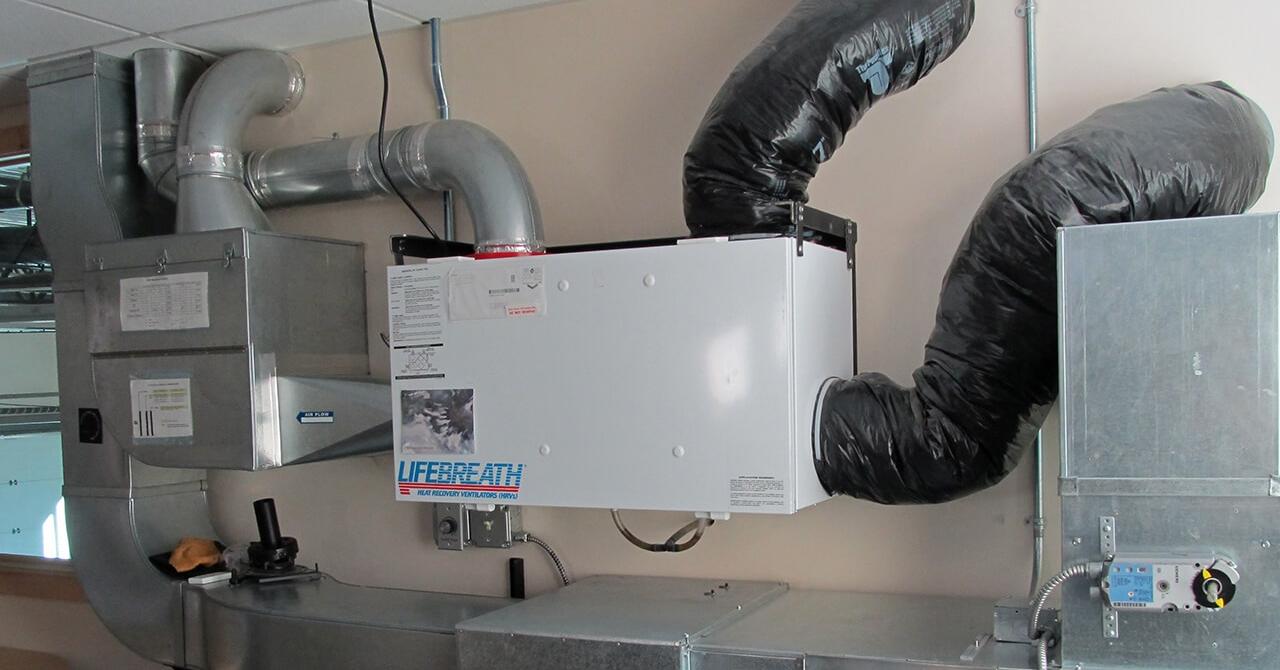Are you curious to know what is an ERV in HVAC? You have come to the right place as I am going to tell you everything about an ERV in HVAC in a very simple explanation. Without further discussion let’s begin to know what is an ERV in HVAC?
In the realm of heating, ventilation, and air conditioning (HVAC), efficiency and sustainability are key considerations. One technology that has gained prominence in addressing these concerns is the Energy Recovery Ventilator (ERV). Let’s delve into the world of ERV in HVAC, exploring its functions, benefits, and the role it plays in optimizing indoor air quality and energy conservation.
What Is An ERV In HVAC?
An Energy Recovery Ventilator (ERV) is a ventilation system component integrated into HVAC systems to enhance energy efficiency and maintain indoor air quality. Unlike traditional ventilation systems that may lead to energy loss, an ERV is designed to recover and exchange energy between the incoming and outgoing air streams, reducing the workload on heating and cooling systems.
Key Elements Of ERV:
- Heat Exchange Mechanism:
The primary function of an ERV is to facilitate the exchange of heat between the indoor and outdoor air streams. During the colder months, the ERV transfers heat from the warmer indoor air to the cooler outdoor air, pre-warming the incoming air. In warmer months, the process is reversed, with the ERV removing heat from the incoming warm air.
- Moisture Transfer:
In addition to heat exchange, ERVs also transfer moisture between the air streams. This is particularly beneficial in humid climates where excess humidity can impact indoor comfort. The ERV helps maintain an optimal balance of humidity, contributing to a more comfortable and healthier indoor environment.
- Air Filtration:
ERVs often include air filtration components that help remove impurities, allergens, and pollutants from the incoming air. This enhances indoor air quality by ensuring that the air circulated within the building is clean and free from contaminants.
- Energy Efficiency:
By recovering and exchanging energy between the indoor and outdoor air, ERVs contribute to energy efficiency in HVAC systems. This not only reduces the overall energy consumption of the HVAC system but also lowers utility costs for the building occupants.
Assemble more facts on different topics like these on Countspeed.
Benefits Of ERV In HVAC:
- Energy ConsERVation:
The energy recovery process in ERVs significantly reduces the demand on heating and cooling systems. This consERVation of energy translates into lower energy bills and a reduced environmental footprint.
- Improved Indoor Air Quality:
ERVs play a crucial role in enhancing indoor air quality by filtering out pollutants and ensuring a continuous supply of fresh, clean air. This is especially important for buildings with limited natural ventilation.
- Temperature and Humidity Control:
The heat and moisture exchange capabilities of ERVs contribute to maintaining a comfortable indoor environment year-round. This temperature and humidity control is essential for occupant comfort and well-being.
- Cost Savings:
While there is an initial investment in installing an ERV system, the long-term cost savings in energy bills and maintenance expenses make it a financially prudent choice for building owners and operators.
Conclusion:
In the intricate dance of maintaining a comfortable and efficient indoor environment, the ERV in HVAC emerges as a star performer. Its ability to recover and exchange energy, regulate temperature and humidity, and enhance indoor air quality positions the ERV as a valuable component in modern HVAC systems. As the demand for sustainable and energy-efficient building solutions continues to grow, the role of ERVs in creating healthier, more comfortable indoor spaces becomes increasingly integral to the future of HVAC technology.
FAQ
What Are The Cons Of ERV?
There are a few problems with HRVs and ERVs, namely:
- These ventilation systems are expensive to install. …
- Standard HRV or ERV equipment won’t function well in extreme cold. …
- The systems will need regular maintenance, including changing the filter every 6 months.
- Certain systems are noisy to run.
Should I Run My ERV All The Time?
To maintain air quality set the ERV controls to the intermittent on off cycle. This continuous intermittent setting should be maintained all year round. If you have a party or are cooking food with odours you can turn the control to high for an hour or so.
Is It Necessary To Have An ERV?
In sum, an ERV offers more consistent ventilation and better control over how much fresh air you’re getting. It’s also easier on your utility bills.
How Much Does A Whole House ERV System Cost?
An ERV system may save you money in the long run, but the initial installation may cost $2,000 or more. Contact a local HVAC company to get a customized quote for a system for your home.
I Have Covered All The Following Queries And Topics In The Above Article
How Does An ERV Work
ERV System
Residential ERV Systems
What Is ERV In Biology
ERV Cost
Commercial ERV
ERV HVAC Installation
ERV Ventilation
What Is An ERV In HVAC
